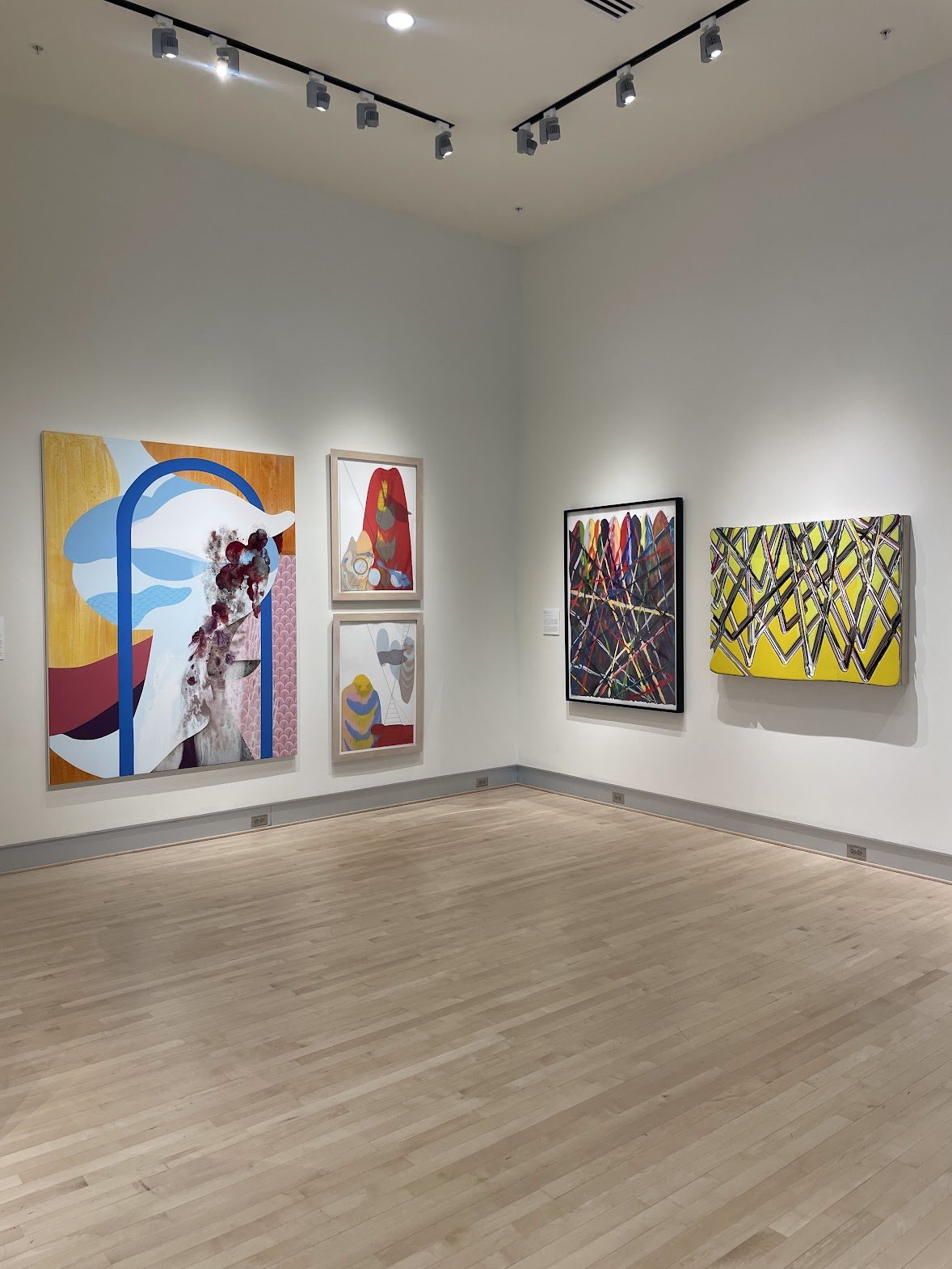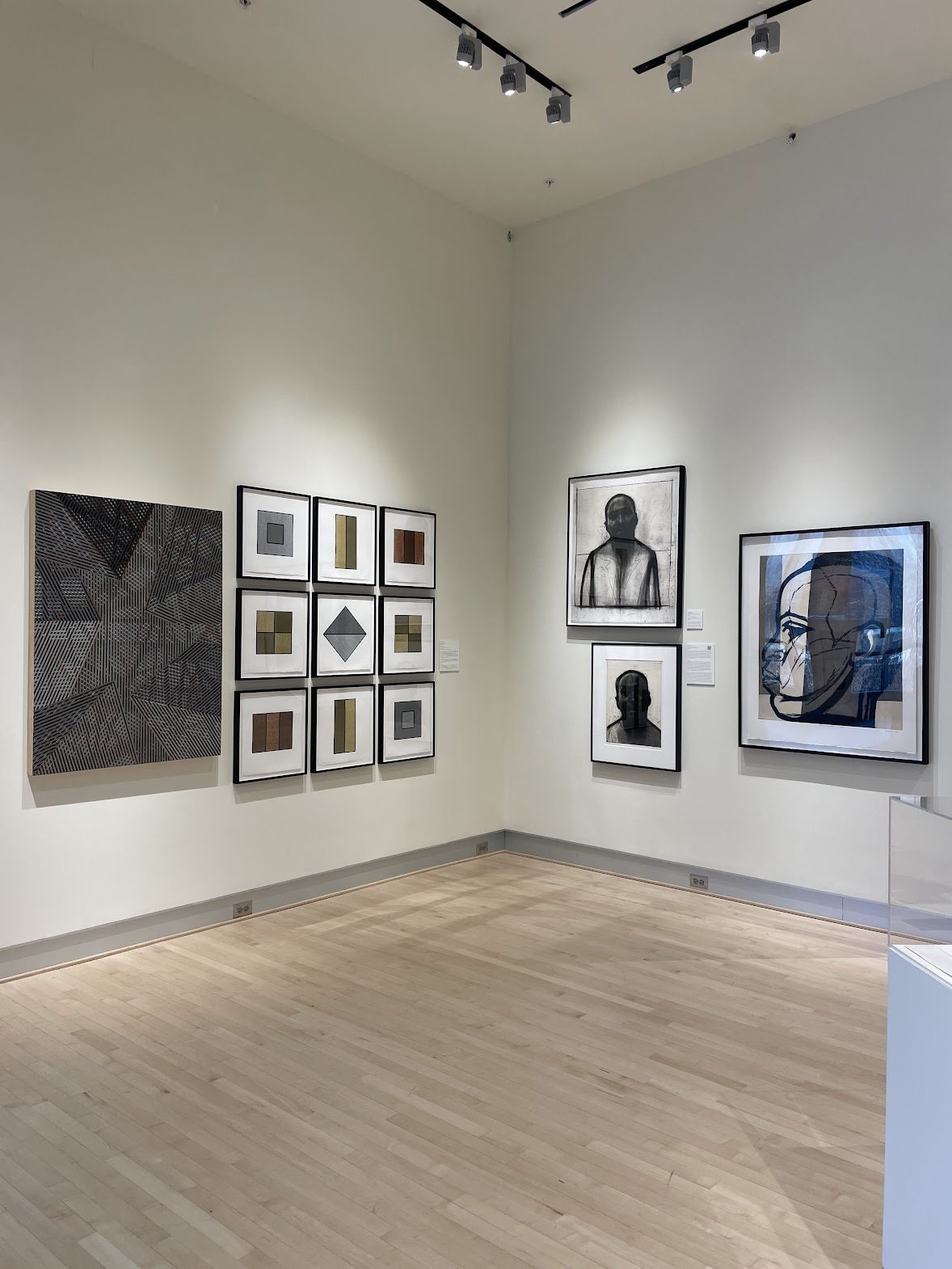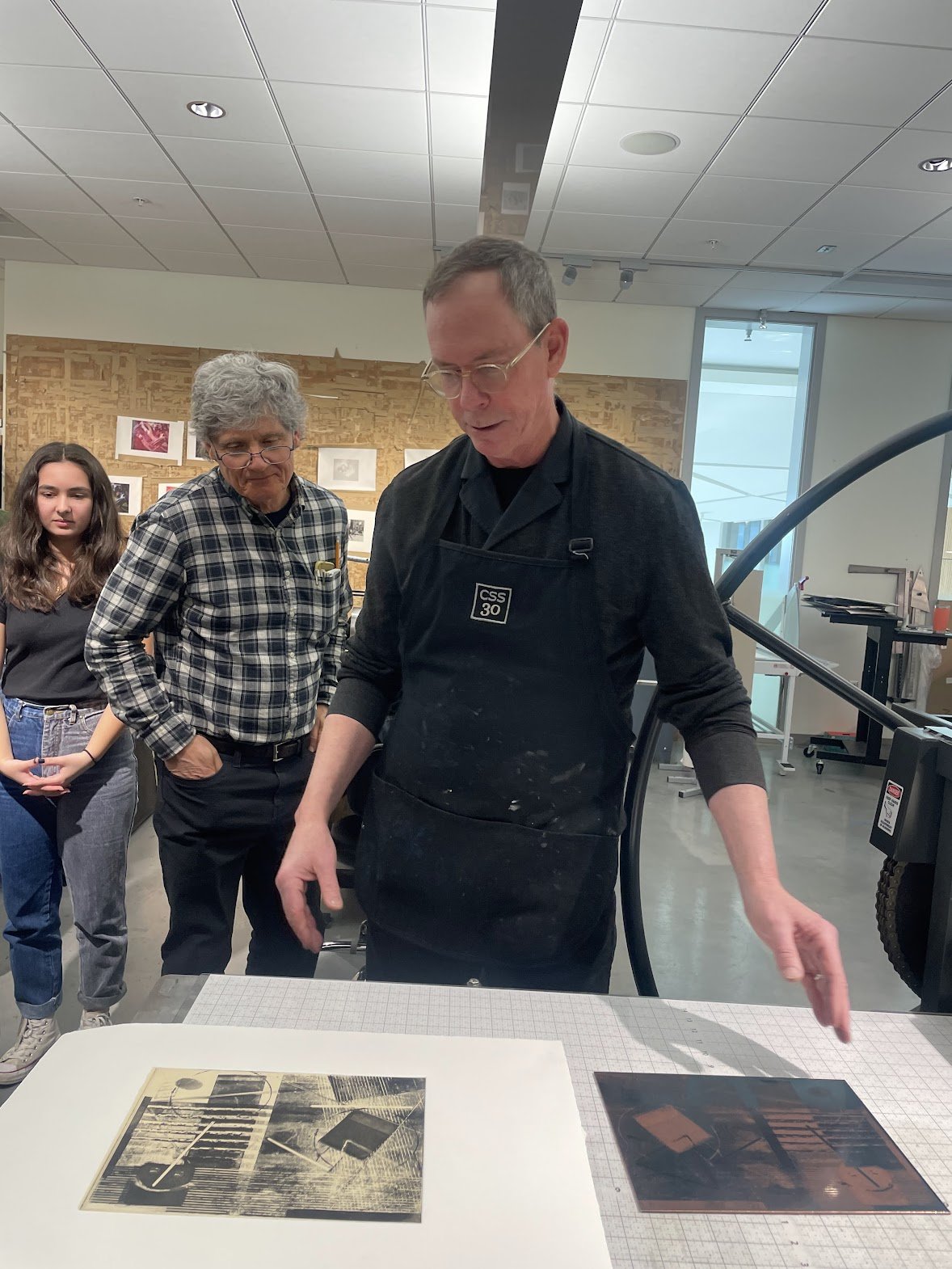Center Street Studio: Translations in Print
This group exhibition showcased prints created at Center Street Studio and investigated the collaborative processes of Master Printmaker James Stroud with artists who typically work in other media. Originally established in 1984 in Gloucester, MA, for almost 40 years, the studio has invited artists to practice their craft and explore new avenues of expression through various printmaking processes, many of which are described in the wall labels here.
It was curated by recent alumnus of the Art & Art History Department at UMass Boston, Tamara Manova ‘20, who originally developed the proposal for a class on the history of printmaking with Assistant Professor of Art History John A. Tyson. By connecting artworks created at Center Street Studio with those executed using the artists' primary techniques, the exhibition prompts viewers to consider the technical aspects of producing prints, draw connections between different mediums and artistic practices, and grasp the ways in which printmaking is simultaneously a process of innovation and transformation.
Before founding the studio, Stroud studied at Atelier 17 in Paris under Stanley William Hayter, known for his focus on the promotion of intaglio techniques. This formative experience was a major influence on Stroud's approach to printmaking, which allowed him to develop a reputation as a skilled and innovative printmaker once he returned to the US. The show aimed to highlight the technical mastery used by Stroud who – informed by each artist's primary medium -- not only translates the visual elements of their artworks, but strives to express their individual style. Prints pulled from his press include editions inspired by the abstract sculptures of Bill Thompson, preparatory drawings for John Wilson’s bust of Martin Luther King Jr. (housed in the U.S. Capitol Rotunda), and the gestural paintings of Carrie Moyer, among others.
This exhibition and its public programming are made possible with support from the Paul Hayes Tucker Fund.
Artists include:
Markus Linnenbrink, Eva Lundsager, Carrie Moyer, Charles Ritchie, Richard Ryan, Laurel Sparks, James Stroud, Bill Thompson, Brian Andrew Whiteley, and John Wilson



Interview with James Stroud made for the Center Street Studio: Translations in Print Exhibition
Part of the programming included a workshop hosted by the Department of Art and Art History to coincide with the opening of the Center Street Studio: Translations in Print exhibition at The University Hall Gallery.
Artist, publisher and master printer James Stroud conducted a master class in intaglio printmaking. Stroud will demonstrate a photo-etching process in copper that replaces the time honored technique of ‘sugar-lift’ or ‘lift-ground’. Stroud dubbed this technique ‘jump-start etching’ because it gets the artist far into the image process very quickly. Once processed in the photo etching technique, the image can be further explored and edited using traditional etching methods.



tngbl.art @ The Royal College of Art
Welcome, please take a seat (Upcoming, April,2024) The Royal College of Art
Public bathrooms occupy a liminal space in our collective consciousness. They straddle a delicate boundary between private and public, and challenge our notions of decorum and propriety. Their utility and (mis)use is unifying, alienating, hilarious, and unspoken. They are for crying, for fucking, for screaming at the mirror and throwing up in the toilet, they are a place where you go to escape your spouse and to meet your lover. What does (mis)use mean when it comes to private spaces in a world of constant surveillance? With this intervention at the RCA Studio Building bathrooms we explore the multifaceted role that public bathrooms play, how the context of the stall shifts understanding and meaning for the works presented, and present the public toilet as a necessary escape.
Through a selection of installations, soundscapes, visual artworks, and performances, we examine how these confined spaces become forums for anonymous dialogue, offering a rare glimpse into the unguarded. The works encourage perceiving, being perceived, confronting and contorting. From intimate glimpses into bathroom rituals to cascading natural sights guiding the journey across the watery bathroom planes, the participating artists offer a variety of interpretations of the bathroom experience. You might shy away from being surveilled by a camera, but does a stall full of mirrors sound more intriguing? Some spend time reflecting, scrolling on phones, flipping through pages of magazines, and some find a space for their thoughts to take form.
Bathroom stall writings serve as an anonymous forum for a wide range of expressions, from the humorous to the profound - confessionals, outcries, encouragements and protest. They provide a safe platform where the anonymity of messages enables a radical form of expression. The participating artists explore this capacity, or power, of a shared public space - the public toilet stall - to safely host both escape and confrontation. An invitation is extended to audiences to express and record, both orally and in written form, their thoughts, grunts, expressions, feelings, and efforts. Words of encouragement, performances, music, prints will be present to inspire and encourage collective shit-making.
Within these confined spaces, daily use meets radical innovation. Escaping institutional constraints to feel at home in the absurd. Explore confessionals, inviting personal revelations. the mundane transcends into the realm of possibility.
Curated by: Tamara Manova, Daisy Magnusson
(N)on Violence: Publication at the RCA w/ Melanie Jackson
“This publication does not try to give answers but draws together our reading list, and reflection on art and artefacts from the Imperial War Museum - to think about the way representations function at a concurrent institutional and personal axis.”




